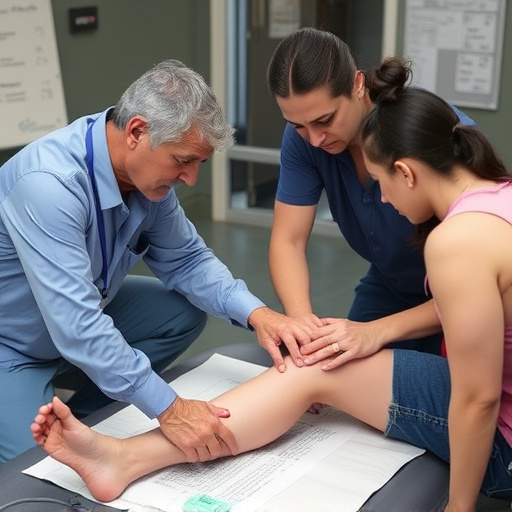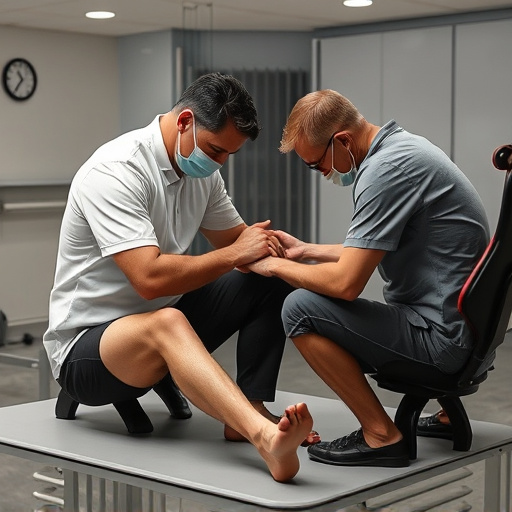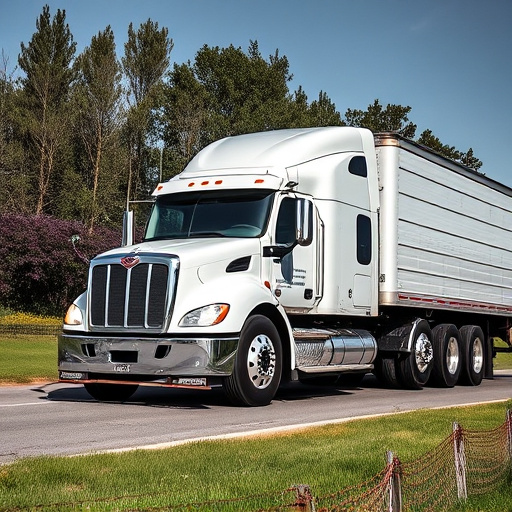Contractors in the federal workplace must prioritize safety and adhere to OSHA standards to prevent injuries, mitigate legal risks, and promote employee well-being. This involves creating secure environments, providing training, offering protective gear, conducting regular inspections, and implementing rehabilitation programs. By balancing fair compensation for injuries with worker safety responsibilities, contractors foster a culture of care and productivity while navigating federal workplace injury laws through open communication and comprehensive claim management. Effective safety protocols, site inspections, and clear communication channels are key to minimizing federal workplace injuries on construction projects.
Federal workplace injury is a critical issue for contractors working on government projects. This comprehensive guide delves into the intricate laws and regulations that govern these injuries, highlighting the rights and responsibilities of contractors. We explore effective strategies for preventing and managing workplace accidents on federal sites, ensuring compliance and prioritizing worker safety. Understanding these key aspects is essential for minimizing risks and navigating the complexities of federal workplace injury claims.
- Understanding Federal Workplace Injury Laws and Regulations
- Rights and Responsibilities of Contractors
- Preventing and Managing Workplace Injuries on Federal Projects
Understanding Federal Workplace Injury Laws and Regulations

In the realm of federal workplace injury, understanding the governing laws and regulations is paramount for contractors to ensure safe working conditions. The Occupational Safety and Health Administration (OSHA) sets standards that mandate employers provide a secure environment, including training, protective gear, and regular inspections. Compliance with these rules not only safeguards workers but also shields contractors from legal repercussions and financial burdens associated with on-site accidents.
Moreover, federal workplace injury laws encompass comprehensive coverage of injury rehabilitation and pain management. Contractors should be aware of their responsibilities in facilitating employees’ recovery, such as offering appropriate medical care, accommodating rehabilitation needs, and ensuring a smooth transition back to work upon muscle recovery. Adhering to these guidelines fosters a culture of care and productivity, ultimately contributing to a healthier and more efficient workforce.
Rights and Responsibilities of Contractors

When working on federal contracts, contractors have both rights and responsibilities when it comes to federal workplace injury matters. They are entitled to fair compensation for any work-related injuries through appropriate channels, ensuring they receive adequate medical care and support during their recovery process. Contractors should be aware of their legal standing and the necessary steps to file claims effectively.
Responsibly, contractors must prioritize worker safety by adhering to all relevant regulations and providing a safe working environment. This includes taking proactive measures, such as regular maintenance, training sessions, and implementing safety protocols. Moreover, they should encourage open communication between employees to promptly address any concerns or potential hazards, contributing to an overall culture of accident prevention. Additionally, contractors are obligated to stay informed about industry-specific standards and best practices related to auto accident recovery, shockwave therapy, and spinal adjustments to ensure the well-being of their workforce.
Preventing and Managing Workplace Injuries on Federal Projects

Preventing and managing federal workplace injuries on construction projects is paramount to ensuring a safe and productive work environment. Contractors should implement robust safety protocols, including regular training sessions for workers on injury prevention techniques and the proper use of protective gear. Regular site inspections are crucial to identifying potential hazards and addressing them promptly. Effective communication channels should be established to encourage workers to report any incidents or concerns without fear of retaliation.
In addition, contractors must have comprehensive plans in place for managing injuries when they occur. This includes providing prompt medical attention and ensuring access to adequate back pain relief and functional rehabilitation services. Proper documentation of all injuries is essential for tracking trends, identifying recurring issues, and implementing targeted interventions to prevent future incidents. By prioritizing safety and adopting proactive measures, contractors can minimize the risk of federal workplace injuries, creating a healthier and more productive job site.
Federal workplace injury is a serious matter that requires a comprehensive understanding of laws, rights, and responsibilities. Contractors working on federal projects must be vigilant in preventing and managing injuries to ensure safety and compliance. By adhering to regulations and taking proactive steps, contractors can create a safer work environment, reduce incidents, and mitigate risks associated with federal workplace injury claims. This knowledge is essential for all contractors engaged in federal projects to protect their businesses and employees.














